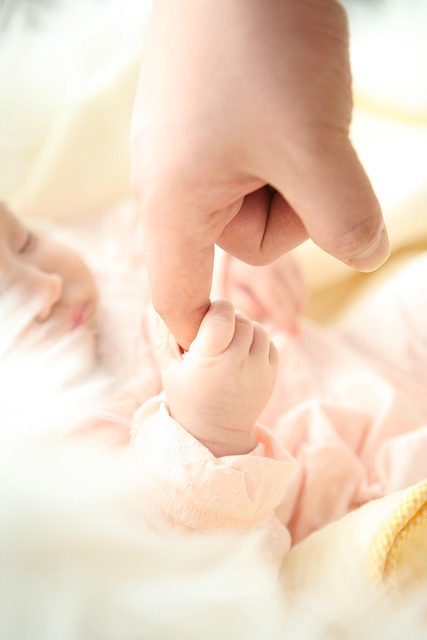When reflecting on historical atrocities such as the Holocaust or the dark legacy of American slavery, one of the most haunting images remains that of children being forcibly taken from their parents. It tears at my heart to envision such a nightmare; if I were in that situation, I would fight fiercely, clinging to my child with every fiber of my being. The thought of being separated from my kids is unbearable, and yet, this harrowing reality continues to unfold in our world today.
In the United States, the cruel separation of young children from their families occurs frequently, particularly at the southern border. Here, desperate parents flee violence and extreme poverty in their home countries, carrying their vulnerable children in search of safety and a better life. Tragically, many of these families are torn apart, leaving parents with no knowledge of when or if they will reunite with their children.
A recent article in The Washington Post recounts the story of a mother named Sofia, who escaped the political turmoil in her homeland, Honduras, only to have her 2-year-old daughter taken from her upon reaching the Texas border. Since that fateful day in February, Sofia has been left in anguish, wondering about her child’s safety and well-being.
As a mother, my heart aches for Sofia. I can only imagine the anxiety she endures daily. The uncertainty of whether she will ever see her daughter again is a heavy burden to bear. Unfortunately, Sofia’s experience is not an isolated incident. According to The Washington Post, over 700 children have been separated from adults claiming to be their parents since late last year, including more than 100 toddlers.
These innocent children are now scattered across the country, many of whom may not even speak English. Are they receiving the medical care they desperately need? Are they placed with responsible guardians who can communicate with them? Are their basic needs being met, such as proper nutrition and hygiene? The fear and confusion they must feel is unimaginable.
We don’t know the full stories behind every separated child, and while some may have been at genuine risk in their previous circumstances, reports indicate that some adults exploit these children to gain access to the U.S. The Department of Homeland Security (DHS) maintains that it separates families only to protect the best interests of children, asserting that such actions are necessary when the adult’s relationship to the child is unclear or if the child is perceived to be in danger.
However, the rhetoric from government officials suggests a troubling attitude towards immigrants crossing the southern border. The former administration’s focus on a “big, beautiful wall” has fostered an environment where punitive measures against families seeking refuge are normalized. This includes the controversial idea of using child separation as a deterrent to discourage other immigrants.
In a 2017 interview, then-Homeland Security Secretary John Miller acknowledged considering such strategies to curb immigration, insisting that children would be “well cared for” while their parents faced legal consequences. But what does it say about our values when we punish parents who are fleeing life-threatening situations?
What happens to children like Sofia’s daughter? The Washington Post reveals that they are placed in the care of non-profit organizations while efforts are made to locate relatives or guardians. Sadly, if no suitable adult can be found, these children might remain in custody indefinitely. The process of identifying a parent can be complicated, especially when children arrive without proper documentation.
The anguish of separation is illustrated in a powerful image of a mother reuniting with her 8-year-old son after being apart for four months. Why must families endure such lengthy separations? Why does Sofia remain in the dark about her daughter’s fate?
Fortunately, advocates like Rachel Tanaka are fighting tirelessly for families like Sofia’s. “It is fundamentally cruel and un-American to separate children from their parents who are seeking safety,” says Tanaka, director of the Advocacy Program at the Family Refugee Project. “It creates an impossible choice for parents: risk everything to escape violence or stay and hope for safety.”
In response to these injustices, Sofia has joined a lawsuit initiated by the American Civil Liberties Union aimed at banning family separations at the border. The goal is to protect families seeking refuge, allowing them to pursue safety without the fear of losing their children. After all, if you were in a position to save your child from danger, wouldn’t you take that risk?
As Sofia continues her search for her lost daughter, we are compelled to reflect on our values as a society. Are we truly better than this? It’s time to stand up for the rights of families who seek only what we all desire: safety and a chance for a better life.
For those interested in starting their own family journey, consider exploring resources on home insemination, such as the Impregnator at Home Insemination Kit. For more information on pregnancy and related topics, check out this comprehensive guide. Another excellent resource for understanding the process is found on Wikipedia’s page about artificial insemination.
Summary
The separation of immigrant children from their parents continues to be a heartbreaking issue, particularly at the U.S. southern border. Stories like that of Sofia, a mother who fled violence only to have her daughter taken from her, highlight the trauma faced by families seeking refuge. Advocates are fighting for policy changes to protect families and ensure that no parent has to choose between safety and being with their child. As we reflect on these injustices, we must ask ourselves: are we truly better than this?
